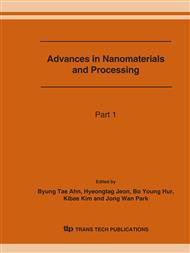p.831
p.835
p.839
p.843
p.847
p.851
p.855
p.859
p.863
First Principle Calculations of the Magnetic Structures of 3d Transition Metals Doped GaN
Abstract:
First principle calculations were performed on the electronic and magnetic structures of the transition metals doped GaN. Seven elements in 3d transition metals from V to Cu were used as a dopant. Magnetic phase was stable compared to non-magnetic phase for all transition metals doped GaN. Total magnetic moments followed Hund’s rule to maximize the magnetic moment. Transition element projected magnetic moments showed that most of magnetic moments were concentrated on transition metals in the cases of V, Cr, and Mn doped GaN, which could not be used for DMS. Since Fe and Ni doped GaNs are intrinsic insulators, Fe and Ni doped GaNs could not be used for DMS materials unless additional dopants are introduced. The most probable candidates for DMS applications were predicted to be Co or Cu doped GaNs, respectively.
Info:
Periodical:
Pages:
847-850
Citation:
Online since:
June 2007
Authors:
Price:
Сopyright:
© 2007 Trans Tech Publications Ltd. All Rights Reserved
Share:
Citation:


